Chameleopatrick
New Member
Plants!
Many times, people wonder what plants are best for chameleons. Plants play a significant role in healthy chameleon husbandry. So what IS best and why?
Artificial plants can look nice and never die. They are often made of wire, plastic, and sometimes silk. Artificial plants however are not only inferior to real plants in just about every way but can also be somewhat dangerous if ingested after being consumed by omnivorous chameleons. For this reason I believe only live plants should be used with chameleons.
There are several other reasons live plants should be used instead of artificial plants such as increased humidity, better water retention on the surface, and nutrition.
When I first started keeping chameleons in the early 1990's, I bought some inexpensive fake plants that had flowers and looked really nice. I careful placed them around my habitat and stood back to enjoy the visual experience. I thought it looked great. However I started to realize the shortcomings once real plants were introduced. My Veileds, Carpets and Panthers were attempting to eat the fake flowers constantly. I removed the fake plants and started experimenting with various non toxic plants.
I've tried Pothos, various Ficus, various Hibiscus, various Scheflera and Baby tears. Most were in a pot that was placed into the enclosure. They all looked good, offered higher humidity and food with micronutrients that you wont get from a multivitamin.
If you have a Panther,Veiled or Carpets then I highly recommend at least one baby tears plant. Baby tears are a native plant of Madagascar and will be devoured by healthy chams. This is a must have plant and food source. The interesting thing to note is that there is no pitch or plant resin with these unlike ficus trees. Picture of Baby tears in a Magnatural plant holder.


Ficus trees are great for many reasons. They are hardy, grow fast and have nice structural support and texture for the chameleons to get a good grip.
Over the years however I moved away from Ficus because I noticed eye problems being more prevalent than without. My theory was juvenile and adults would eat the starts off of new leaves that were sprouting and get the white pitch in or on the eye and the eye problems would begin. As a result My Ficus are now just house plants.

Hibiscus are some of the most beautiful of flowers and will catch anyones attention with their brilliant colors. The woody stems and edible flowers would seem to be a good choice but unfortunately for chameleon owners they are a short lived due to inadequate lighting and care. If you have an outdoor enclosure in Hawaii you are good to go. Otherwise there are better options for indoor Chameleon care.

Pothos variety plants are some of the best chameleon plants for indoor enclosures. They grow quickly and tolerate a wide variety of conditions. Chameleons just LOVE to climb and drink off of these plants. They can even be grown without soil. Every chameleon enclosure should have at least one. Of all the plants discussed this particular type will hold water on the leaves the longest for the chameleons to drink and not rot the plant.

Epiphytes and airplants are also really great plants for chameleon enclosures. These offer a soilless option where plants are hung versus in pots. There is no soil for chameleons to try and eat. The hanging root systems offer great climbing opportunities and the blossoms will be the envy of everyone that see's your chameleon habitat. If you hang these plants or mount them on cork you almost cant over water them and orchids can be very hardy. With nothing on the ground in pots there is no mold issues from using too much water and cleaning is very easy.






Just some things to think about.
Many times, people wonder what plants are best for chameleons. Plants play a significant role in healthy chameleon husbandry. So what IS best and why?
Artificial plants can look nice and never die. They are often made of wire, plastic, and sometimes silk. Artificial plants however are not only inferior to real plants in just about every way but can also be somewhat dangerous if ingested after being consumed by omnivorous chameleons. For this reason I believe only live plants should be used with chameleons.
There are several other reasons live plants should be used instead of artificial plants such as increased humidity, better water retention on the surface, and nutrition.
When I first started keeping chameleons in the early 1990's, I bought some inexpensive fake plants that had flowers and looked really nice. I careful placed them around my habitat and stood back to enjoy the visual experience. I thought it looked great. However I started to realize the shortcomings once real plants were introduced. My Veileds, Carpets and Panthers were attempting to eat the fake flowers constantly. I removed the fake plants and started experimenting with various non toxic plants.
I've tried Pothos, various Ficus, various Hibiscus, various Scheflera and Baby tears. Most were in a pot that was placed into the enclosure. They all looked good, offered higher humidity and food with micronutrients that you wont get from a multivitamin.
If you have a Panther,Veiled or Carpets then I highly recommend at least one baby tears plant. Baby tears are a native plant of Madagascar and will be devoured by healthy chams. This is a must have plant and food source. The interesting thing to note is that there is no pitch or plant resin with these unlike ficus trees. Picture of Baby tears in a Magnatural plant holder.
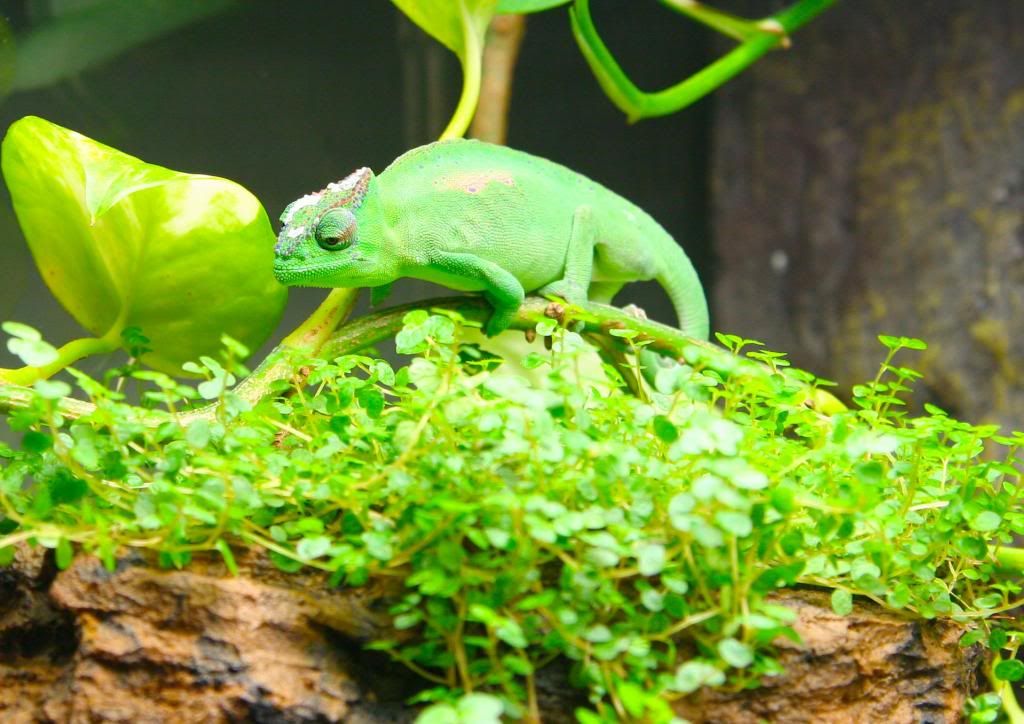
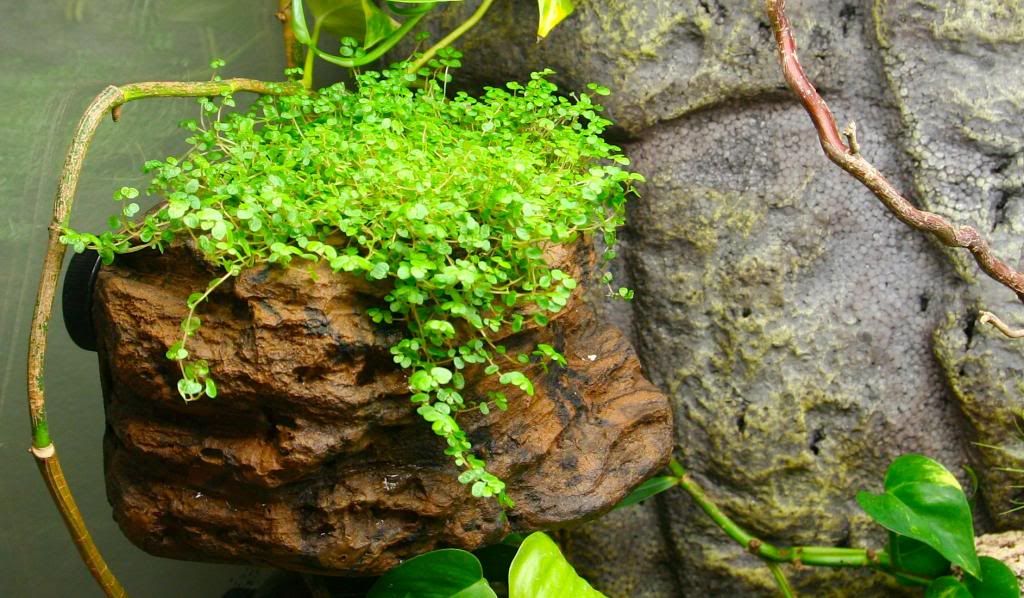
Ficus trees are great for many reasons. They are hardy, grow fast and have nice structural support and texture for the chameleons to get a good grip.
Over the years however I moved away from Ficus because I noticed eye problems being more prevalent than without. My theory was juvenile and adults would eat the starts off of new leaves that were sprouting and get the white pitch in or on the eye and the eye problems would begin. As a result My Ficus are now just house plants.
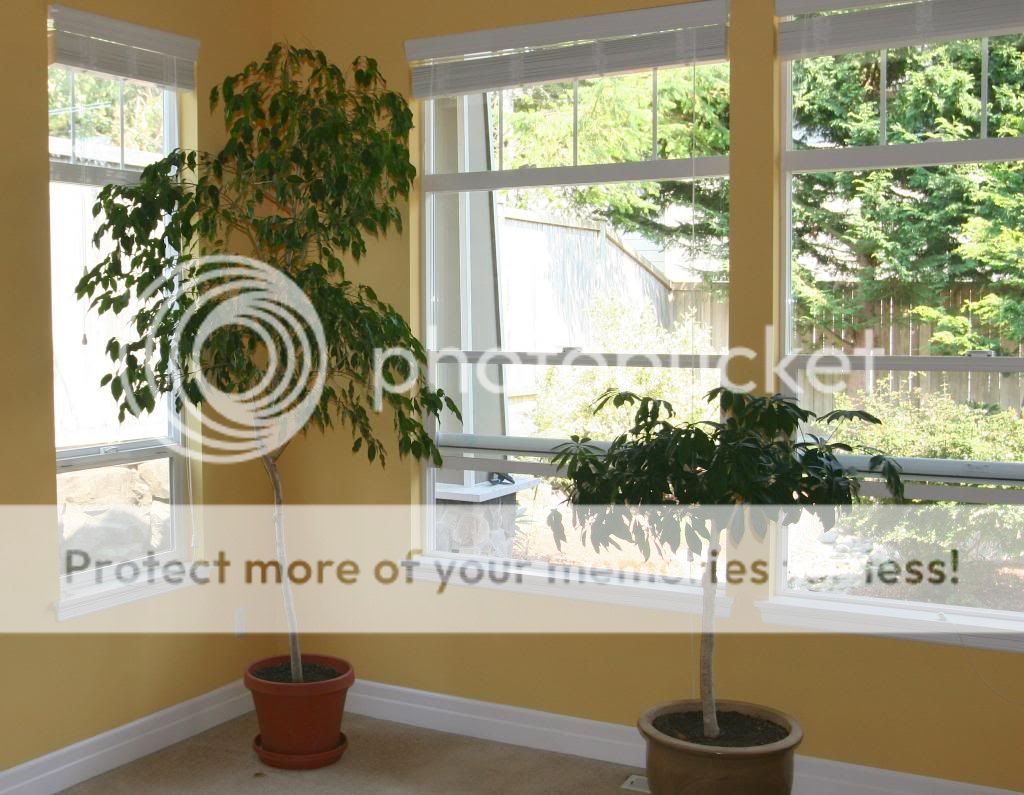
Hibiscus are some of the most beautiful of flowers and will catch anyones attention with their brilliant colors. The woody stems and edible flowers would seem to be a good choice but unfortunately for chameleon owners they are a short lived due to inadequate lighting and care. If you have an outdoor enclosure in Hawaii you are good to go. Otherwise there are better options for indoor Chameleon care.
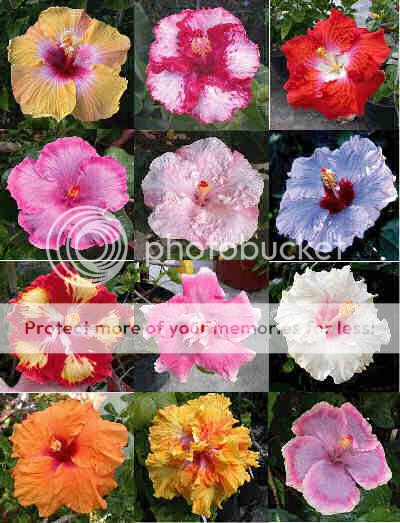
Pothos variety plants are some of the best chameleon plants for indoor enclosures. They grow quickly and tolerate a wide variety of conditions. Chameleons just LOVE to climb and drink off of these plants. They can even be grown without soil. Every chameleon enclosure should have at least one. Of all the plants discussed this particular type will hold water on the leaves the longest for the chameleons to drink and not rot the plant.
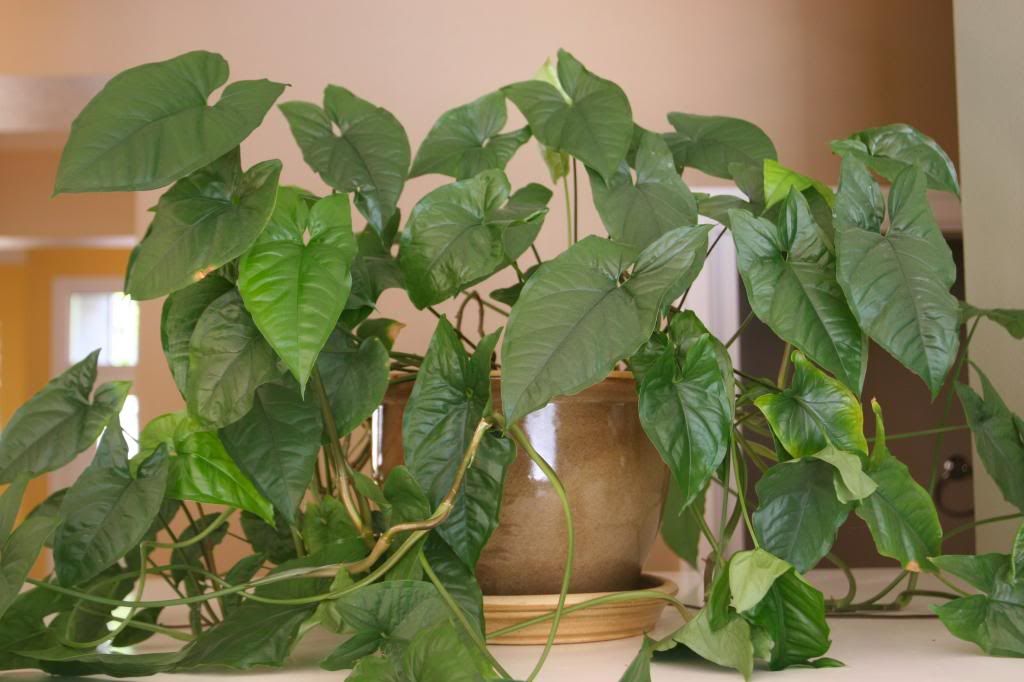
Epiphytes and airplants are also really great plants for chameleon enclosures. These offer a soilless option where plants are hung versus in pots. There is no soil for chameleons to try and eat. The hanging root systems offer great climbing opportunities and the blossoms will be the envy of everyone that see's your chameleon habitat. If you hang these plants or mount them on cork you almost cant over water them and orchids can be very hardy. With nothing on the ground in pots there is no mold issues from using too much water and cleaning is very easy.

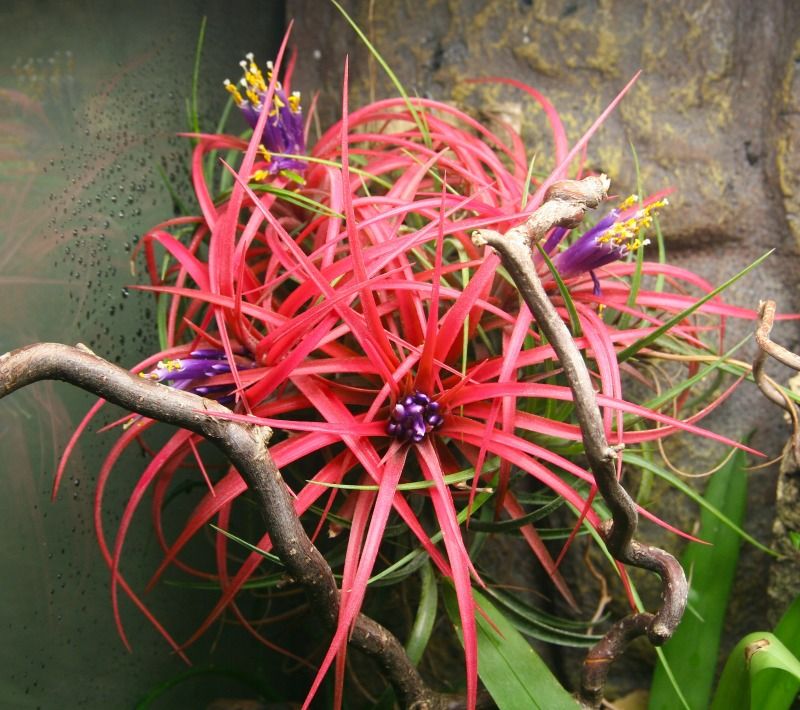
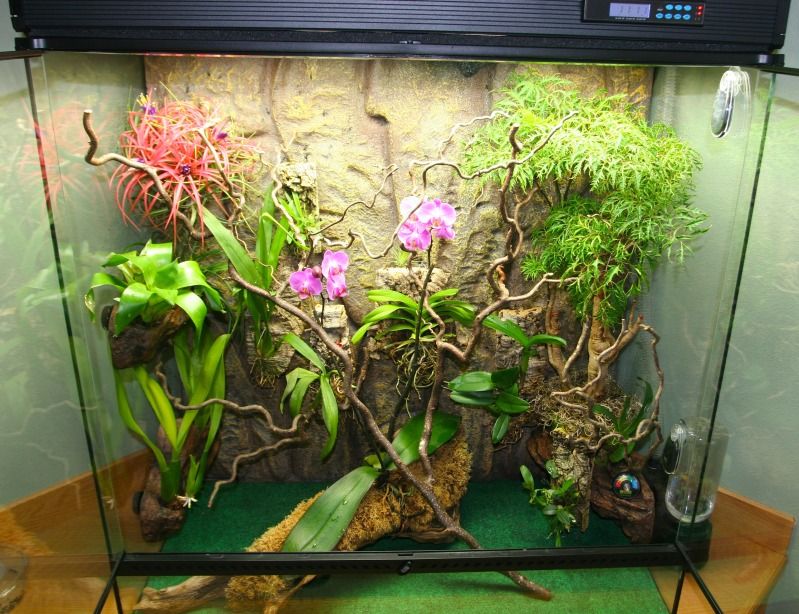
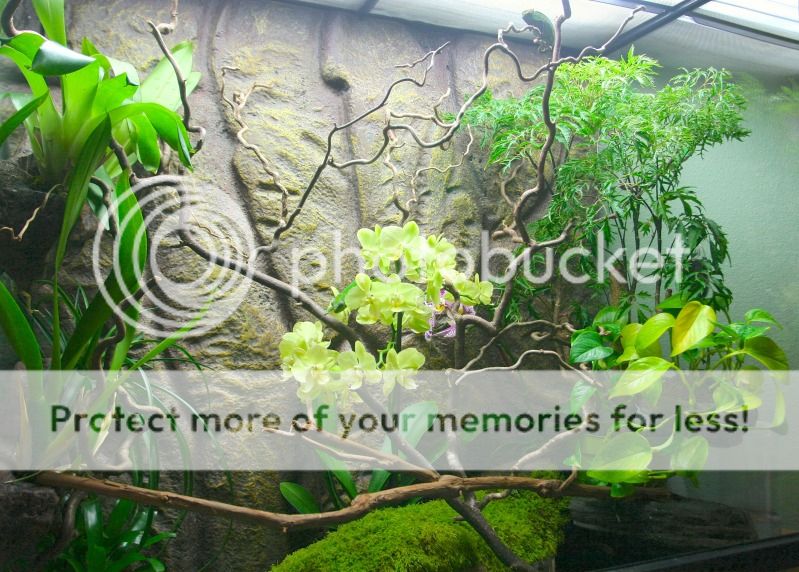

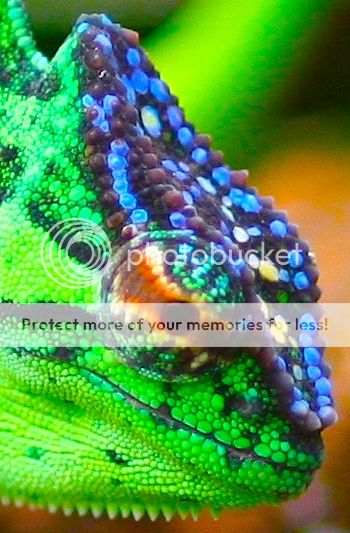
Just some things to think about.




